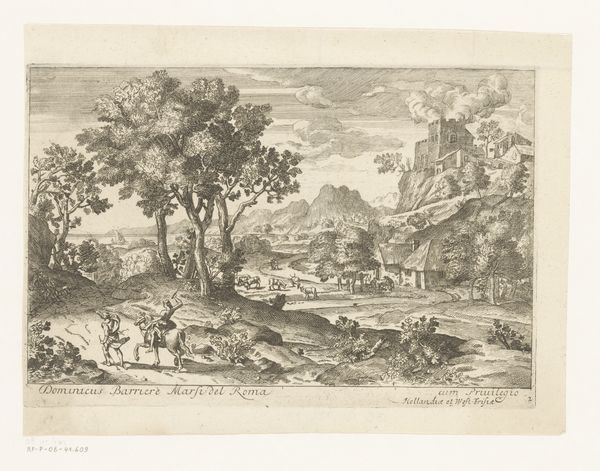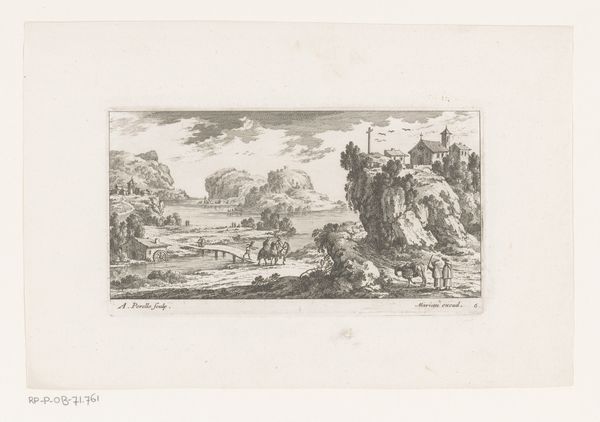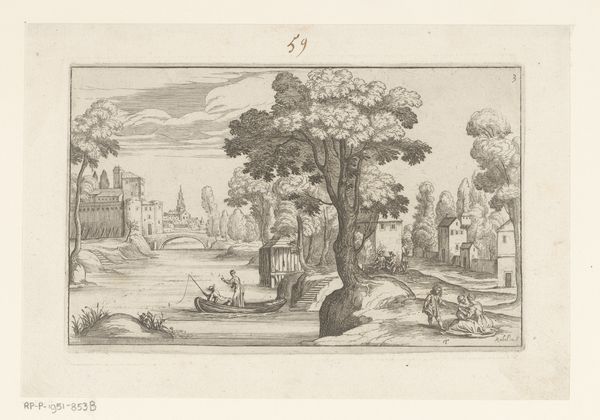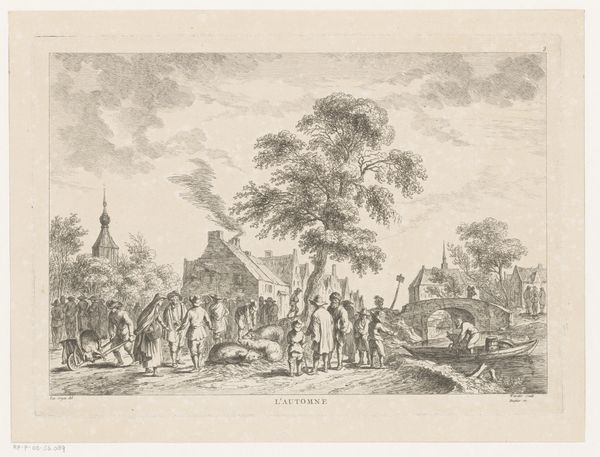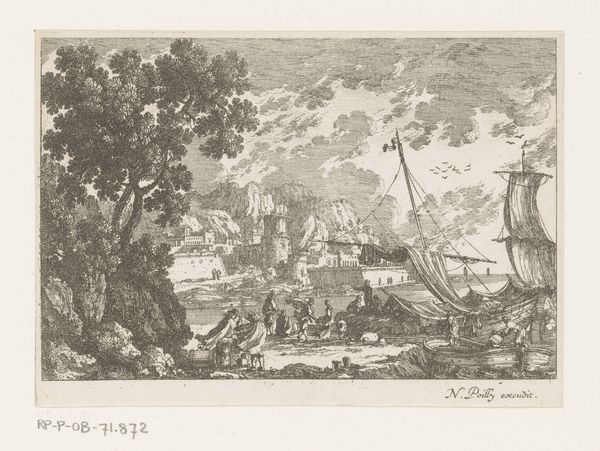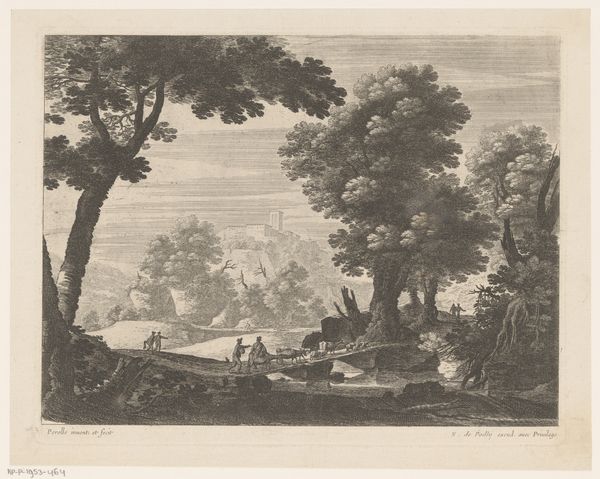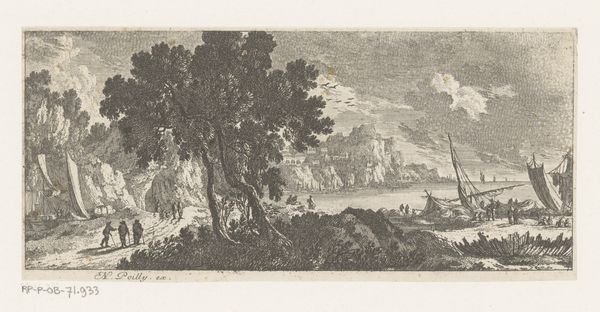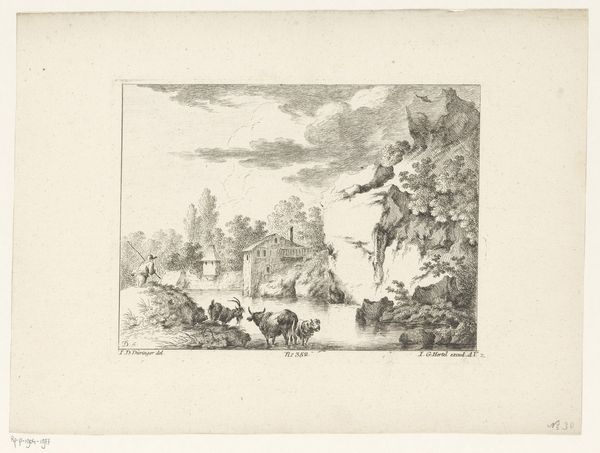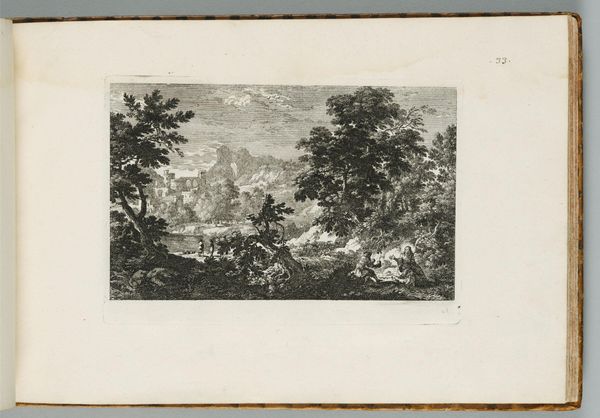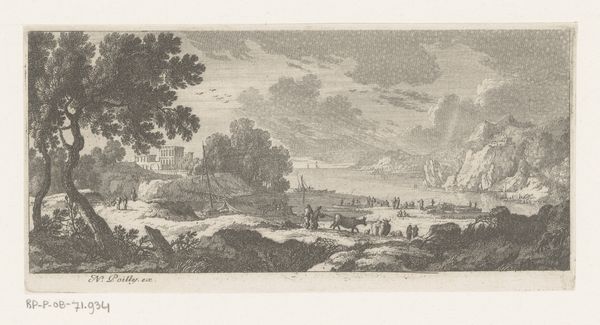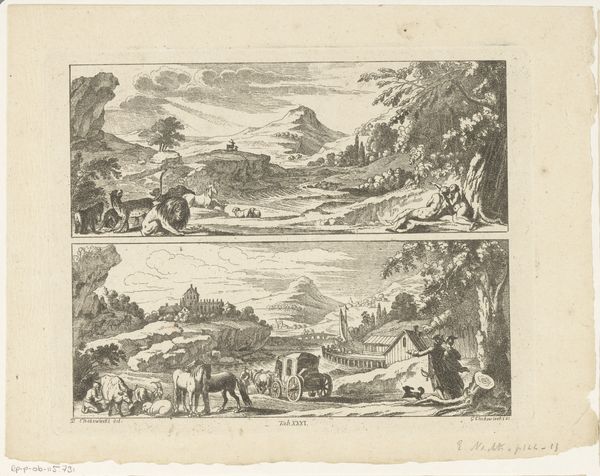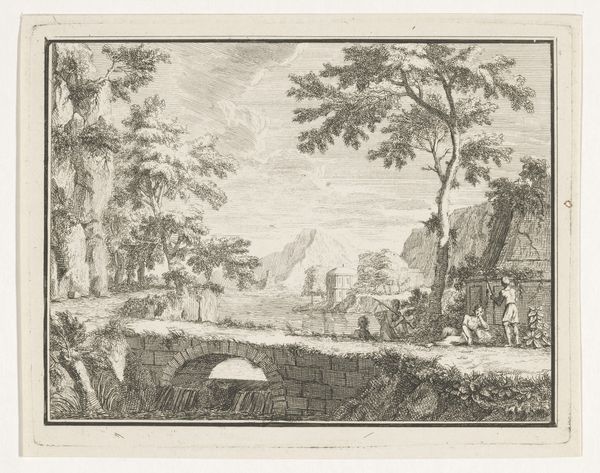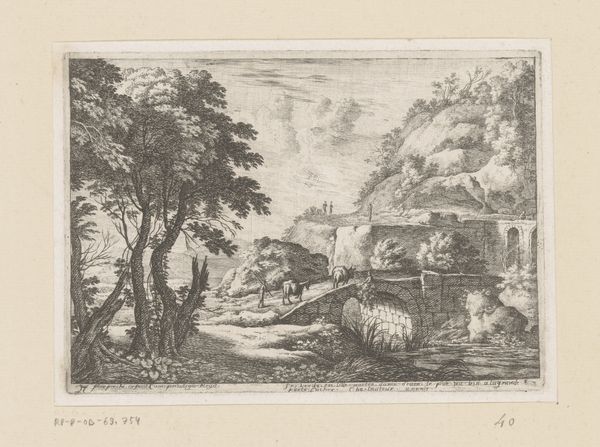
Dorp in bergen met beek en veehoeder die op hoorn blaast 1603 - 1650
0:00
0:00
matthausimerian
Rijksmuseum
print, engraving
#
baroque
#
dutch-golden-age
# print
#
landscape
#
genre-painting
#
engraving
Dimensions: height 186 mm, width 286 mm
Copyright: Rijks Museum: Open Domain
Matthäus Merian created this landscape etching, showing a village in the mountains, sometime in the first half of the 17th century. This kind of scene became popular across Europe at this time, reflecting new ideas about the relationship between humans and the natural world. This etching romanticizes rural life. It was produced in the Netherlands, which at this time had a complex social structure, with a wealthy merchant class and growing urban centers. Here, the image presents a kind of imagined simplicity. The village is set within a carefully ordered landscape, with the houses and the people arranged in a pleasing composition. Note how Merian has placed the shepherd at the front, drawing our eye into the scene, which speaks to the way that art can be used to create a particular view of the world, one that idealizes the traditional ways of life. To understand this image better, one might research the social and economic conditions of the 17th-century Netherlands. Doing so would reveal the complex ways in which art reflects and shapes our understanding of the world.
Comments
No comments
Be the first to comment and join the conversation on the ultimate creative platform.
